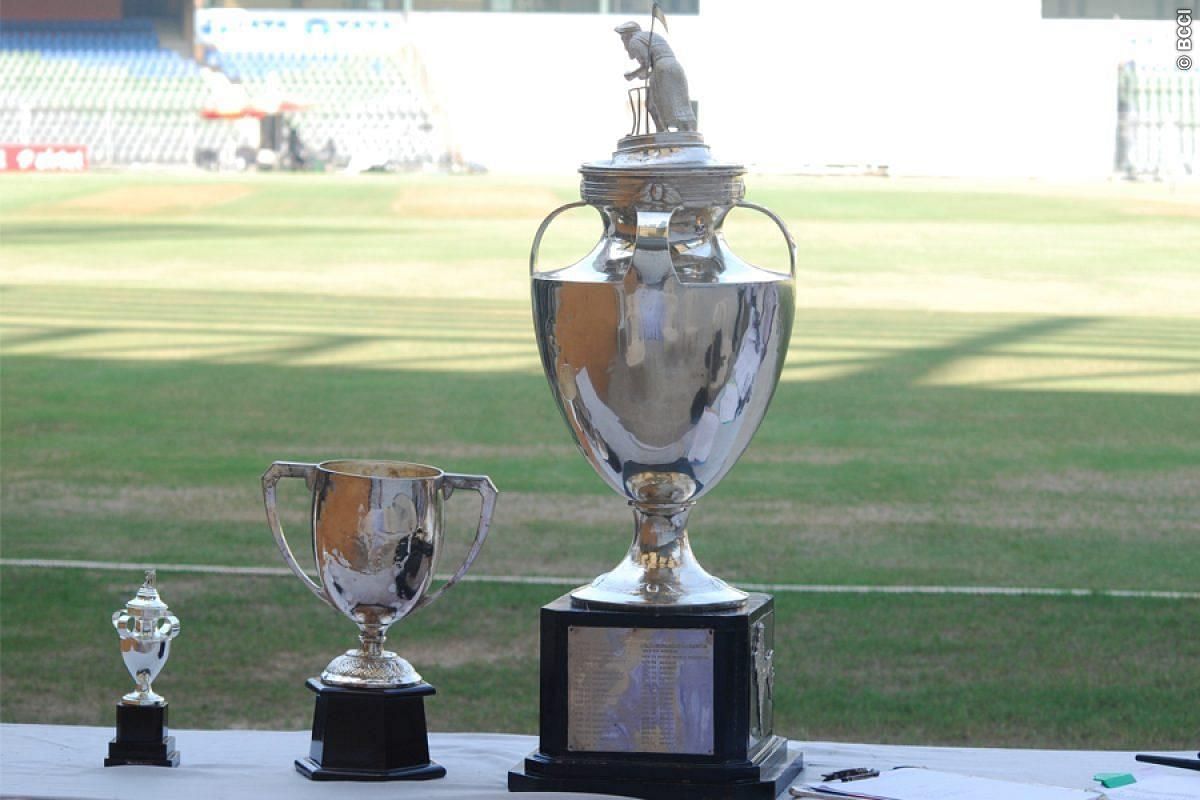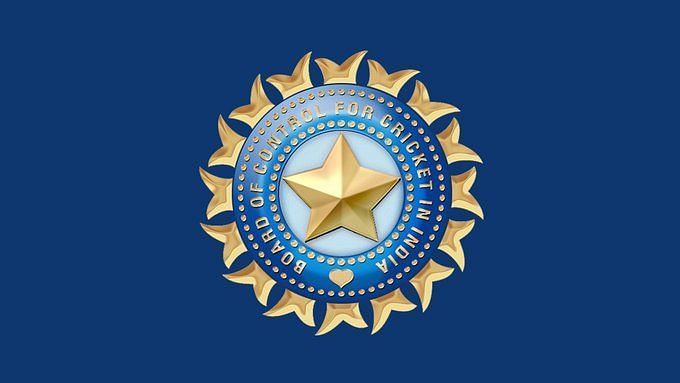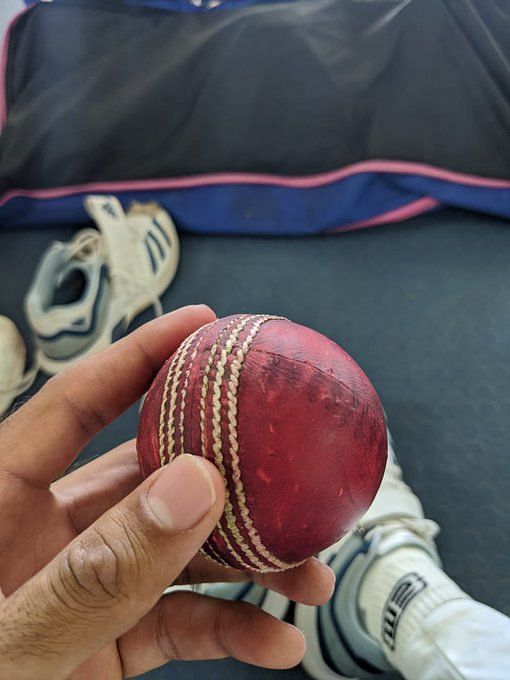
Ranji Trophy postponed - just not meant to be, again?

A few months ago, the BCCI, to the excitement of many, announced that the Ranji Trophy would be taking place in January 2021 and that it would be running until the end of March.
Over the years, the decision to host the Ranji Trophy hasn’t been a watershed announcement. It was considered sacred and happened every season without fail.
More recently, though, COVID-19 has wreaked havoc on that particular schedule, meaning that the last iteration of the Ranji Trophy, as things stand, remains the 2019-20 installment.
Thus, you could understand the optimism – both among the players and the fans when the BCCI pledged to conduct the 2022 edition. Unfortunately, they’ve had to shelve the idea because….well, you probably know the answer by now.
The 2022 edition of the Ranji Trophy has been postponed
Since that development, Sourav Ganguly has reportedly told sources that the Ranji Trophy has only been pushed back by “15 days”. But when considering the wave of COVID-19 that has gripped the country, it seems improbable that everything can be set in order for the competition to materialize as slated earlier.
At the moment, the number of COVID-19 cases in the country are surging at a faster rate than it did during the deadly second wave (April-June 2021) – a period where even the IPL had to be stopped mid-way after cases began emerging in what was supposed to be a watertight and secure bio-bubble.
Post that, though, there was a bit of respite and the BCCI, to their credit, capitalized. They quickly scheduled domestic men’s tournaments, namely the Syed Mushtaq Ali Trophy and the Vijay Hazare Trophy, with none of them facing any impediments.
From that perspective, there is hardly anything different the BCCI could have done at this point apart from not postponing/rescheduling the upcoming edition of the Ranji Trophy.
The other spin to the story, though, revolves around whether they could’ve done something different to ensure that one of the world’s oldest competitions finally came to fruition.
Over the past few years, not many active international cricketers have participated in the Ranji Trophy for long durations. The ones who usually play are those who aren’t a part of India’s white-ball setups or are trying to rediscover form.
Thus, a case can’t really be made to hold the Ranji Trophy at a time when it doesn’t overlap with India’s international calendar because these players constitute a minority.
On the other hand, the Ranji Trophy is the final frontier for a lot of youngsters, who dream of representing their states as soon as they start playing the game. While the IPL has brought about a slight change in perception, the feeling of lifting the Ranji Trophy or, in fact, participating in the competition, remains unparalleled.
The national team, at this juncture, seems blessed with a lot of talent – talent that has come through the Ranji Trophy ranks and now finds itself on the cusp of international glory. If the tournament doesn’t happen altogether – as it has happened in the past couple of years, things could take a turn for the worse.
Drawing parallels with England or mentioning any of their recent red-ball exploits in the same breath as India seems a little ludicrous. Yet, their downward trajectory began only after they started viewing white-ball cricket as the format they wanted to actively improve and invest upon.
To an extent, they took red-ball cricket for granted, hoped that their rich culture would sustain their structure and thought that it wouldn’t really affect the Three Lions. Fair to say it hasn’t quite transpired that way.

England also tried to accommodate County Cricket in the early summer months (April and May). During that period, though, the pitches, which are still very cold and damp underneath, provided for a poor contest between bat and ball. Bowlers who could never make the grade in international cricket scalped tons of wickets. And, the lesser said about the batting levels, the better.
India hasn’t reached that stage yet. But if they keep neglecting the Ranji Trophy, it might not be long before they would treacherously be treading that fine balancing line between red-ball and white-ball cricket.
So, there is enough evidence hinting that the Ranji Trophy, irrespective of other commitments, should remain a priority for the BCCI. The more practical angle, though, revolves around how, when and where can the BCCI try to squeeze in what was once dubbed a marquee event.
There is no simple answer to that, as you would’ve guessed by now. Not just because of COVID-19 and the complications it presents, but also because finding a suitable window for the Ranji Trophy has become as difficult as real estate hunting in Mumbai.
Back in 2019-20, 38 teams took part in the Ranji Trophy. The sides followed a league-cum-knockout format, with them being divided into four large groups.
Two groups (A and B) which housed the likes of Bengal, Gujarat, Karnataka, Mumbai, Saurashtra, Uttar Pradesh, Tamil Nadu and Vidarbha. Group C had teams such as Haryana, Maharashtra and Odisha – outfits that were on the verge of breaking into the Ranji Trophy elite. The remaining sides were placed in what was dubbed the ‘Plate Group’.
Teams in Group C and D played nine games each, whereas those in A & B participated in eight matches. Quarter-finalists were then decided based on their respective points tallies and the knock-out stage commenced thereafter.
Assuming all 38 outfits are still eligible for the Ranji Trophy, a fixture list can be made where 26 of them don’t have to play the first round. The remaining 12 can battle in six knockout encounters, with the six winners joining the rest to make it a Round of 32.
Cites that have multiple venues (Bengaluru, Chennai, Delhi, Kolkata and Mumbai) can be narrowed down so that these teams can be clubbed in three larger groups and can travel to the next venue together, thereby avoiding contact with the rest of the population and keeping their bio-bubble intact.
In an ideal world, this format of the Ranji Trophy would be derided because it attacks the very ideals of the competition. The Ranji Trophy has historically been regarded as the ultimate test of determination, grind, patience, perseverance and most importantly, longevity.
This tournament isn’t about how a team plays on a particular day. But more about how they continue maintaining their intensity throughout a season, how they overcome inevitable roadblocks and how they make the most of the resources at their disposal.
However, when considering how much red-ball cricket has taken place since the 2019-20 season, cricketers would certainly bite the BCCI’s hand off, even if such a remedy was offered. After all, something is always better than nothing, isn’t it?
The other logical solution is to prioritize the Ranji Trophy over the white-ball tournaments – something that happened until the 2018-19 campaign. The Ranji Trophy always took place before the Syed Mushtaq Ali Trophy and the Vijay Hazare Trophy.
But with the IPL Auction being a big deal these days, the white-ball competitions are organized such that franchises can assess their options before the bidding war begins.
It has its benefits too, with franchises such as the Kolkata Knight Riders, the Mumbai Indians and the Sunrisers Hyderabad profiting. That, though, is not the debate here. The conundrum here is about trying to balance both red-ball and white-ball assignments so that one isn’t entirely cast by the wayside.
Ironically enough, the national team’s deepest troughs in recent times have come about in white-ball cricket. The humiliating exit Virat Kohli’s troops suffered at the T20 World Cup in 2021 and the heart-breaking semi-final defeat in the ICC 2019 Cricket World Cup quickly spring to mind.
In Test cricket, India has taken down Australia in Australia, is on the brink of a series victory against England in England and seems on course to outwit South Africa away from home for the first time ever.
So, from a poetic inclination, you feel that this trend will boomerang quite quickly and hurt India, wherein their red-ball reserves, which seem in fine fettle now, might not be as dependable, owing to a lack of Ranji Trophy cricket.
A lot of it, though, is conjecture at the moment. There might be situations where conducting the Ranji Trophy isn’t feasible and you feel that the Ranji Trophy just isn’t meant to be in this COVID-19 era.
The edition, scheduled for this season, could still happen and throw all of this out of the window. But the fact that this is worth a discussion tells you something isn’t quite right.
A great man once said – “where there is a will, there is a way”. So far, the will has been to host white-ball tournaments during favourable phases and look the other way when it’s time for the Ranji Trophy.
That countless Indian fans rejoiced when the dates for the Ranji Trophy were announced (nothing more), tells you it might be the tip of an iceberg Indian cricket shouldn’t meddle with.

